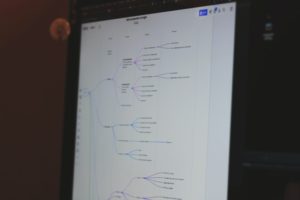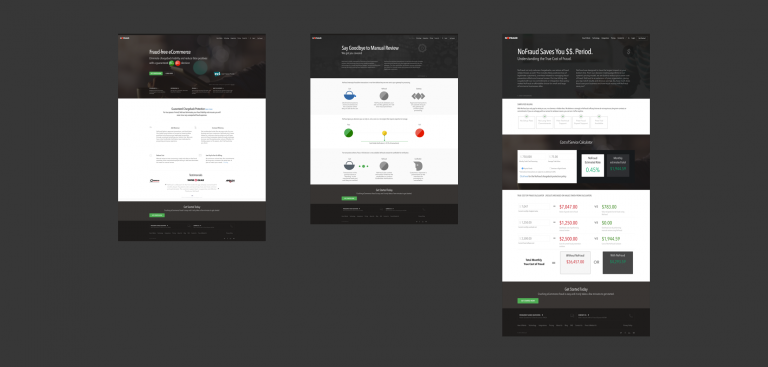Unhindered in its incessant growth, the Internet of Things (IoT) continues to increase its network of connected devices exponentially. Gartner predicts that a staggering 20 billion connected devices will be in existence by 2020. To put into further context, the current trajectory of the IoT will soon usher in an age where there are, on average, three connected devices for every living person. In keeping with Gartner’s research, this fast-growing industry will soon be powering a market worth upwards of $3 trillion. An explosive growth in any industry is always accompanied with a barrage of data, a challenge that we here at True Interaction understand well. The issues associated with capturing vast amounts of data easily, both structured and unstructured, is a critical barrier point in the pursuit of data discovery and we provide solutions to these data management difficulties by means of our platform Synaptik.
While the unimpeded growth of IoT is indeed quite promising, we cannot simply dismiss the unique set of challenges that accompany such a sudden and chaotic influx of devices. The current infrastructure and infrastructure of Internet and online services are hardly primed to handle the identifying, connecting, securing, and managing of so many devices. The difficulties posed by large IoT ecosystems may be considered as a problem for the future, but the technology that can address these issues potentially exists now.
Blockchain as a Solution?
Hailed for the transparency, accuracy, and permanence that is inherent in its process, our previous post explains that blockchain “create[s] a digital ledger of transactions that can be shared among a distributed network of computers.” The utilization of cryptography allows each account on the network to access and manipulate the ledger securely, decentralizing the process and essentially eliminating the need for a middleman. Finance had one of the first and most notably successful implementation of blockchain through Bitcoin, and the industry is seemingly eager to embrace the technology even more. We have covered the meteoric rise in importance and interest that blockchain technology has been attracting in a comprehensive post, as well as its applications in the media and entertainment industry. However, this instance, with its suggested applications in the IoT, is especially momentous in that it observes the convergence of two recently developed technological sectors. So how will the blockchain model assist the IoT industry in its promising ascent?

Security
IoT’s impressive growth is an assuring testament to its bright future as well as its crux. A centralized model of security has been effective in the past, but it is not nearly equipped to handle network nodes that balloon up to the millions from devices that also conduct billions of transactions. Not only will the computational requirements (and costs!) skyrocket, but expanding a network to that size will inevitably cause servers to become a bottleneck. The chaotic and highly vulnerable state that this puts servers in will make it susceptible to Denial of Service (DoS/DDoS) attacks, where servers are targeted and brought down by being flooded with traffic from compromised devices.
The organization inherent in the system gives blockchain the ability to create secure mesh networks that allow devices to connect reliably to one another. Once the legitimacy of a node has been secured and registered on the blockchain, devices will be able to identify and authenticate each other without the need for central brokers. An added benefit of this model is its scalability and the way it can be expanded to support a billion devices while barring the need for additional resources. IBM extrapolates the results of blockchain’s impeccably accurate and transparent record-keeping capabilities by anticipating more trust to form between people and parties, thus making transactions run more seamlessly. Chris O’Connor, General Manager, Internet of Things Offerings for IBM, illustrates the concept:
“While Person A may not know device B and may not trust it implicitly, the indelible record of transactions and data from devices stored on the blockchain provide proof and command the necessary trust for businesses and people to cooperate.”
Self-Regulation
What is a common feature in the most expansive imaginings of a technologically unmatched world? Typically, the height of technological success is marked by the existence of self-sustaining machines. It may astonish people to learn that the means for creating devices that have little to no need for human interference already exists. IBM and Samsung have partnered together in developing a concept known as ADEPT (Autonomous Decentralized Peer-to-Peer Telemetry). The project chose three protocols (file sharing, smart contracts, and peer-to-peer messaging) to underpin the seminal concept.
One of the most interesting proposals for the use of this technology is the enabling of devices to autonomously maintain themselves. IBM’s draft paper features lofty goals that include devices not only being capable of signaling operational problems, but also being able to retrieve software updates and potentially address its self-diagnosed issues. The ADEPT technology is intended to accomplish the incredible feat of allowing devices to communicate with other nearby devices in order to facilitate power bartering and energy efficiency. Machines that work in accordance with consumables will be able to restock their own supplies as well. This feature will be available in a Samsung W9000 washing machine. Wielding the ADEPT system, this Samsung washing machine will use smart contracts to issue commands to a detergent retailer that gives the device the ability to pay for an order itself and later receive word from the retailer that the detergent has been paid for and shipped.
Smart Contracts
In the digital age, with the emergence of a slew of transaction systems, blockchain is being heralded as the next logical step. At the heart of blockchain technology is its unique penchant for transparency and demand for accountability from its users. Moreover, its decentralized process negates the need for intermediaries. These unique features make blockchain a feasible platform on which to conduct smart contracts. Co-opting the technology’s intended transactional use, “contracts could be converted to computer code, stored and replicated on the system and supervised by the network of computers that run the blockchain.” The exchange of money, property, or anything of value in a conflict-free manner sans a middleman to broker the deal exists because of blockchain technology.
Blockchain is just one of many frameworks and sources of data into which Synaptik can be easily integrated. Data management is the most critical piece in the seamless execution of a successful data discovery process that is capable of gleaning answers to questions you may not have known to ask.
For more information to empower your data science initiatives please visit us at www.Synaptik.co. We pride ourselves in our ability to empower every day users to do great data discovery without the need for deep core technical development skills.
Denisse Perez, Content Marketing Analyst for True Interaction, contributed to this post.
by Joe Sticca







